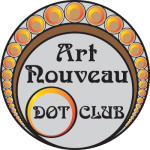In the golden obsessions of Gustav Klimt – Ateneo Mercantil, Valencia
The exhibition ‘Klimt’s Gold’, at the Ateneo Mercantil de València, shows a chronological journey through the life and work of the Viennese painter through a multimedia, immersive and sensory montage.
Gustav Klimt (Vienna, 1862 – 1918) was an artist of obsessions. His work shone between two styles: symbolism and the modernist movement of the Viennese Secession. Recognized as one of the greatest names in Art History, he is perhaps the most important Austrian painter of his time. His painting The Kiss (1907-1908) made him world famous, but his work went far beyond that.
A total immersion in his life and work is what is proposed by the immersive exhibition hosted by the Ateneo Mercantil de València until August 15. A “unique experience”, says the head of Nomad Art, Alejandra Soto, who wants to excite “through all the senses”. The images follow one another in 360º along 400 meters of giant screens, which envelop you in their golden work combining music, aromas, art and new technologies. A multimedia montage with evocative sensations.
Klimt’s Gold’ is the result of a meticulous study of the painter’s work. The first few minutes take the viewer to the beginning of the 20th century, in a Vienna in the midst of change. “He was a painter who wanted to break with the established; he created his own movement together with other artists, who created another way of expressing themselves, of approaching art and of using it above all to move and reach those issues that concerned or fascinated them at the time,” explains the director.
Gustav Klimt dedicated himself from a young age to the School of Arts and Crafts, following the traditional line of painting, until “there came a moment of rupture in which he wanted to explore and began to paint those iconic golden paintings”. His work is extremely ornamental thanks to the influence he was influenced by his father, who was a goldsmith, and the trips he made to Ravenna, where he was able to appreciate firsthand the beauty of Byzantine art and its radiant gilding. Influenced by other intellectuals such as Sigmund Freud, Klimt translated delirium into his works. The detail of each brushstroke, the curved lines typical of Art Nouveau and its vibrant colors can be appreciated in large dimensions in this immersive exhibition.
This eclectic style, his paintings full of sensuality and abstraction and, above all, his gilding, are unique signs of identity that have made him an easily recognizable figure, also marked by controversy and the destruction of some of his pieces, already during Nazism. His painting The Portrait Adele Bloch-Bauer I, painted in 1907, became in 2006 the most expensive ever sold when it was acquired for 135 million dollars. The woman portrayed, an Austrian intellectual of the early 20th century, was one of the painter’s many muses.
“With the work of Klimt we all go quickly to his wonderful ‘Kiss’ or his ‘Tree of Life’, but there is a very dense work behind: he made many portraits of the Viennese bourgeoisie, especially of women, he was very interested in the feminine; he also made many landscapes and other works that, in this type of exhibition, we can rediscover,” says the head of this exhibition that will be in Valencia until mid-August.
Find below a very interesting one-hour painting lecture (IN SPANISH) by Ms. Manuela García, specialist in Art History at the Nau Gran of the University of Valencia and Guide at the Museum of Fine Arts San Pío V in Valencia.
Klimt’s painting annoyed the ideology of Vienna, as they saw it as a representation of a vague image and Catholics found the nudes in his paintings unpleasant. In 1909, he began to experiment and become an expert in making mosaics, his best known works are The Kiss or Judith.
The themes that characterized his works were: love, sexuality and death. The value of his works is evident in the prices at which his works have been sold, in 2006 a portrait painted by him was bought for 135 million dollars by the New York museum Neue Galerie.
